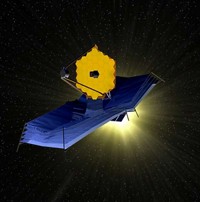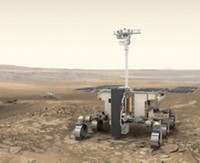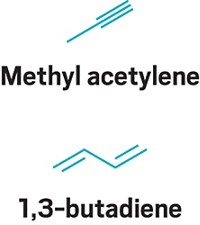Advertisement
Grab your lab coat. Let's get started
Welcome!
Welcome!
Create an account below to get 6 C&EN articles per month, receive newsletters and more - all free.
It seems this is your first time logging in online. Please enter the following information to continue.
As an ACS member you automatically get access to this site. All we need is few more details to create your reading experience.
Not you? Sign in with a different account.
Not you? Sign in with a different account.
ERROR 1
ERROR 1
ERROR 2
ERROR 2
ERROR 2
ERROR 2
ERROR 2
Password and Confirm password must match.
If you have an ACS member number, please enter it here so we can link this account to your membership. (optional)
ERROR 2
ACS values your privacy. By submitting your information, you are gaining access to C&EN and subscribing to our weekly newsletter. We use the information you provide to make your reading experience better, and we will never sell your data to third party members.
Astrochemistry
There is a speed limit for detecting biosignatures in space
Spacecraft that fly too fast while seeking out chemical clues of life might fragment small biomolecules upon impact
by Ariana Remmel
December 22, 2022

Mass spectrometers hurtling through space in search of life may need to stick to a speed limit, according to research presented at the American Geophysical Union (AGU) Fall Meeting 2022.
NASA’s Cassini spacecraft flew through a plume of ice erupting from subsurface oceans on Saturn’s moon Enceladus. With the spacecraft traveling at 7–17 km/s, molecules within the plume ionized on impact. This impact-induced ionization made it possible for a mass spectrometer aboard Cassini to detect chemical clues about the molecular makeup of the icy moon’s seas. “The problem is, when it comes to biosignatures, that may be a little too fast,” Morgan Cable, a research scientist at the NASA Jet Propulsion Laboratory, said in a presentation on Dec. 14. Previous research has suggested that much like a butterfly hitting the windshield of a truck, delicate compounds may fragment beyond recognition in high-speed collisions with spacecraft, she said.
To investigate, Cable and her colleagues used a combination of Earth-bound mass spectrometry measurements and computational simulations to see how impact speed affects molecular fragmentation of small biomolecules such as amino acids. The researchers found that at speeds below 3 km/s, the molecules bounce off the mass spec’s detector without ionizing. At speeds above about 6 km/s, the amino acids break apart. For researchers designing fly-by missions to search for signs of life on Enceladus and other ocean worlds, “you really want to keep it to about 3–6 km/s,” Cable said.





Join the conversation
Contact the reporter
Submit a Letter to the Editor for publication
Engage with us on Twitter